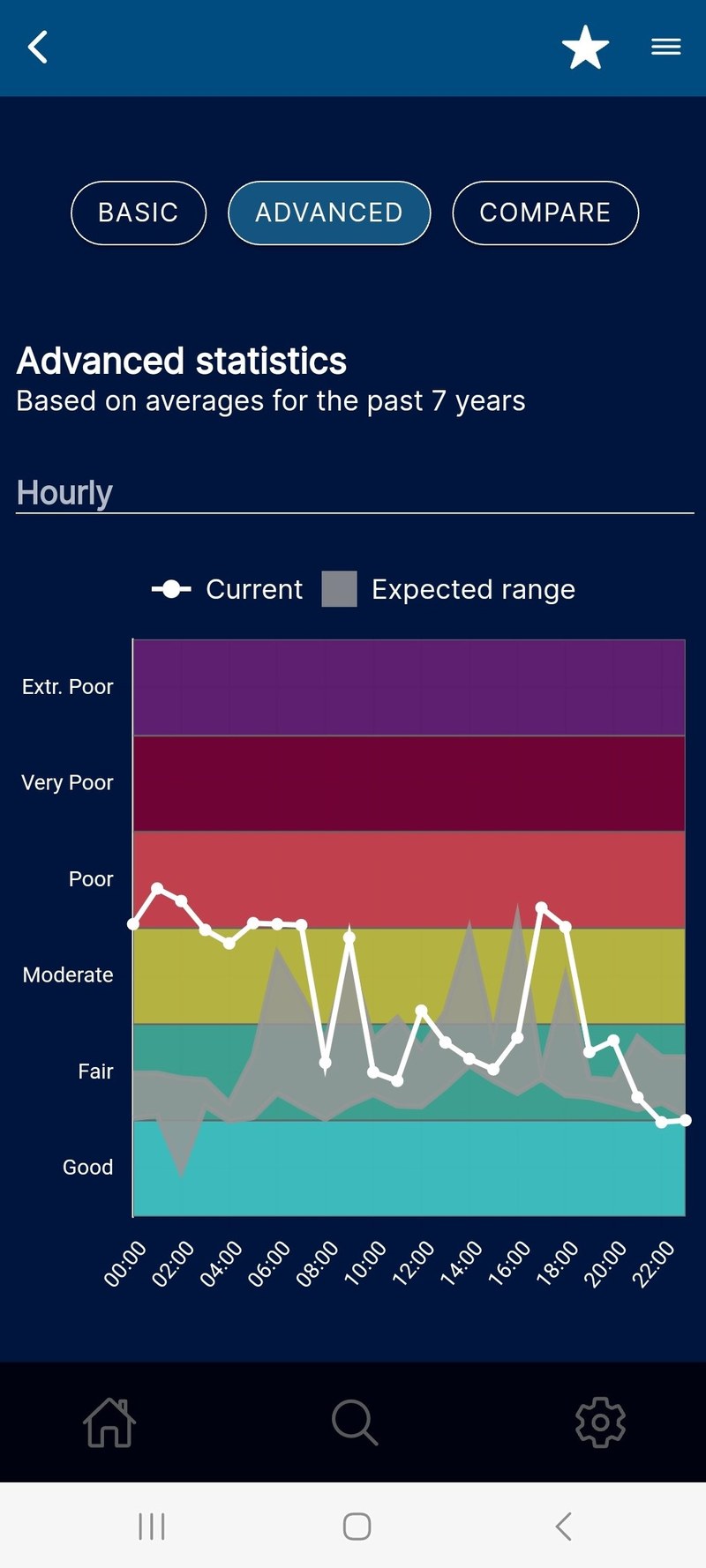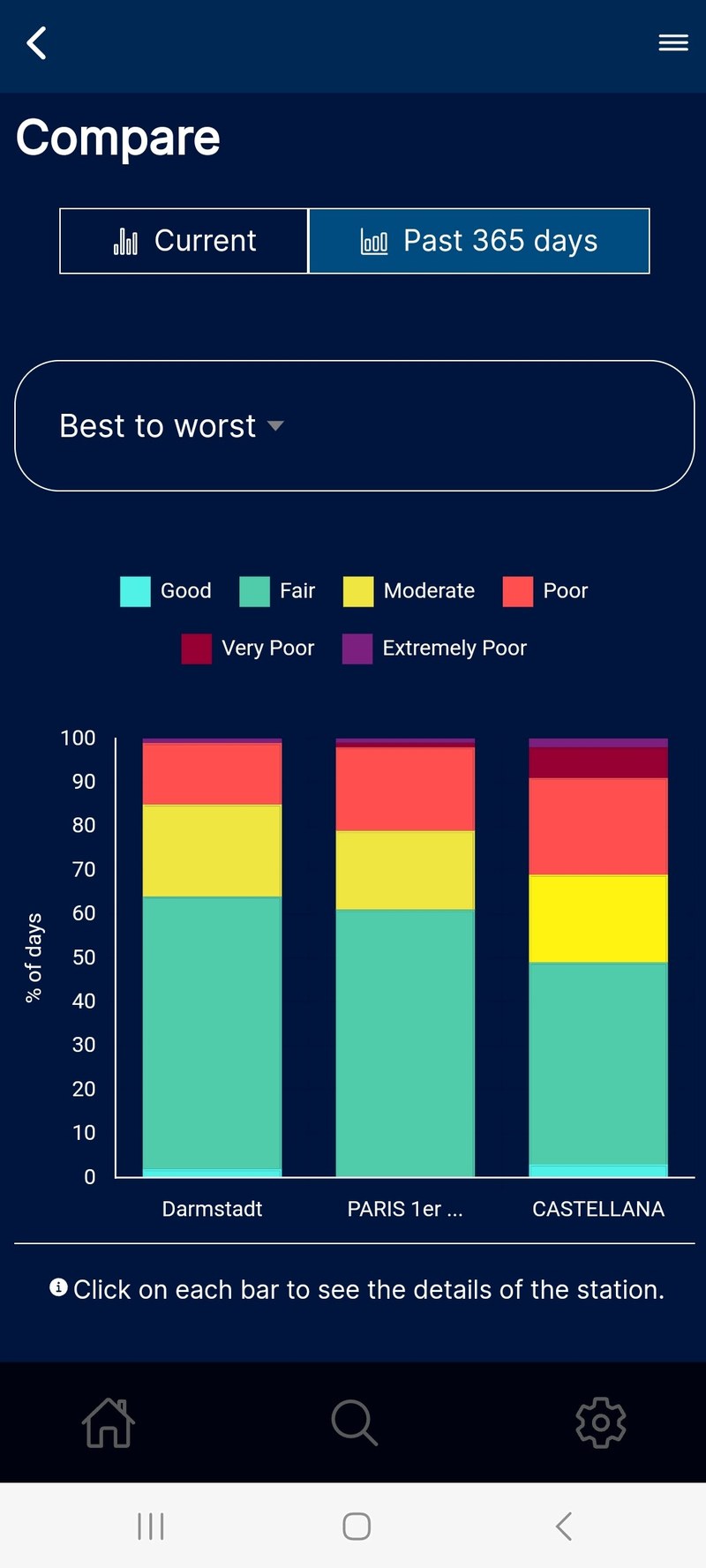All official European Union website addresses are in the europa.eu domain.
See all EU institutions and bodiesHow is the level of air pollution where you live? Now you can use the European Air Quality Index App on your mobile phone in any of the EU’s 24 official languages. The significant update, which the European Environment Agency released today, also introduces new features, allowing users to better compare air pollution data levels and trends from more than 3500 monitoring stations across Europe.
The European Air Quality Index App, first launched in 2021, provides instant access to up-to-date air quality monitoring data from monitoring stations located in European cities and towns and includes air quality forecasts and health recommendations. The app, which is free of charge, allows users to understand more about air quality where they live, work or travel. Users can gain insights into the air quality in individual countries, regions and cities.
The updated version is available in 24 European languages, making reliable and comparable air quality information easier to access for every EU citizen.
Advanced air quality statistics allows users to dive into data from the last days, weeks and years and also allows you to compare selected stations and learn when the best air quality is to be expected.
New features also include the ability to create personal user profiles, a colour-blind scheme and a newsfeed from the EEA’s Twitter account.



The European Air Quality Index App is free to download here:
About the European Air Quality Index
The European Air Quality Index is based on hourly information from more than 3500 air quality monitoring stations in Europe. The index offers users insights into the air quality in individual countries, regions and cities. It is calculated using a combination of up-to-date data reported by EEA member countries and forecast data of the air quality level as provided by Copernicus Atmospheric Monitoring Service (CAMS).
Data from the application is linked to the EEA’s air quality monitoring platforms. The European Air Quality Index is based on concentration values for up to five key pollutants, including:
- particulate matter (PM10);
- fine particulate matter (PM2.5);
- ozone (O3);
- nitrogen dioxide (NO2);
- sulphur dioxide (SO2).









